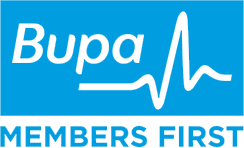take me theredoctors commentshttps://www.cliveedghill.co.uk/building-works/best replica watches reviewcell phone caseself bar strawberry ice cream
ACL Injury
The anterior cruciate ligament (ACL) is one of the main supporting ligaments in our knee. Not so long ago, a rupture to the ACL was an injury that we believed required surgical repair to return to a sport that involved twisting and turning. However, there is now considerable evidence that this is not necessarily the case.
Stephanie Filbay ( Physiotherapist and research fellow at the University of Melbourne) recently reviewed the literature to find the best evidence to support ACL injury management. She found that a lot of the common beliefs we have about this injury are not supported by research findings.
Myth 1: You can’t return to sport without having surgery.
In the last decade, multiple studies have investigated the return to sports rates that involve pivoting and sharp direction changes following ACL rupture. Return to sport and physical activity rates are similar in those undergoing surgical repair and those opting to do rehabilitation alone (Smith et al. 2014, Grindem et al. 2012, Frobell et al. 2010, Frobell et al. 2013).
Myth 2: Knee injury rates are higher if you don’t have an ACL reconstruction following rupture.
Studies have shown that ACL reconstructive surgery does not protect the knee from further injury. The re-rupture rate of the surgical graft is up to one in three young people. Repair of the second ruptured graft offers no additional protection, with up to 27 % of revised grafts failing.
Myth 3: Your knee will be unstable if you don’t have the ACL surgically repaired after the injury.
Several studies have shown that patients can achieve a functionally stable knee by completing high-quality rehabilitation following ACL rupture.
Myth 4: You are more likely to get osteoarthritis if you don’t have the ACL repaired following rupture.
Reports of osteoarthritis on X-Ray are similar in both non-surgical and surgical management of ACL rupture. It is thought that the bone bruising that occurs at the time of injury causes the changes that are seen on X-Ray, years down the track.
It is important to note that arthritis findings on X-Ray are poorly linked to symptoms, such as joint stiffness and pain. Only 50% of people that have injured their ACL report knee pain some 10 to 15 years after injury.
Myth 5: Patients report better outcomes following ACL surgery.
Studies investigating patient reports of knee pain, giving way, activity levels, and quality of life; found no difference in these long-term outcomes in early reconstruction or rehabilitation alone (Grindem et al. 2018).
So what does this mean for you if you have just ruptured your ACL?
The evidence is clear that you can take some time to consider your options. Consider the following to help guide your treatment choice.
- Non-surgical management of ACL ruptures can result in a knee that copes with high-level sports involving pivoting and direction changes.
- MRI findings do help guide treatment options. If the injury only involves the ACL, there is more chance of success with a non-surgical approach.
- If you don’t want to return to sports that involve rapid direction changes and jumping, there is a higher chance that rehabilitation alone will provide good long term outcomes.
- Seek an opinion from a sports doctor and physiotherapist with experience in this area. They will help provide a treatment plan that considers your age, long term goals, the extent of the injury and the life demands that can interfere with adequate rehabilitation.
- A trial of intense and progressive rehabilitation for 6 to 8 weeks before surgery is the favoured approach to see how well the knee responds to exercise. If the athlete cannot function at a sufficient level to achieve their sporting or occupational goals, ACL reconstruction should be considered.
- Outstanding knee function following ACL rupture is dependent on completing a high-quality exercise program that focuses on strength, landing patterns, balance and sport-specific agility training (Eriksson et al. 2013). Surgery alone is not sufficient to achieve this result. Many recreational athletes fail to complete the necessary rehabilitation. Approximately 45 % drop out of supervised rehabilitation after only three months (Ebert et al., 2018). The prehab phase of management exposes the injured athlete to the rehabilitation demands necessary to achieve a successful outcome.
- Before returning to a specific sport, the athlete should pass a series of tests that indicate that rehabilitation has achieved the necessary strength, balance and agility required to participate. These tests look at strength, hop distance, landing technique and agility skills. The psychological readiness to return to sport is important to assess how confident or mentally prepared the athlete is to return to sport.
What about kids?
The dilemma with athletes that are still growing is that surgery may disrupt bone growth. The reality is that this is less than 2% of cases (Moksnes et al. 2012). The research on operative versus non-operative management in this age group is scant. One study followed a group of paediatric ACL injuries sustained before 13 years of age through to 18 years of age. Of 44 participants, approximately half managed well without surgery. One-third of these returned to pivoting sports, and the remaining two-thirds restricted returned to sports that required no pivoting. The other half had ongoing instability and required ACL reconstruction. One-third of this group also required meniscal surgery (Ekas et al. 2019).
Where to get more information?
If you are considering your options following ACL rupture, several Facebook groups allow you to ask questions and see how others are managing their recovery.
See:
- ACL + Meniscus Tear Recovery without Surgery
- ACL Recovery Club Australia- following surgery
- Paediatric ACL Surgery Support Group for Parents
Email admin@westlakephysio.com.au for references
Posted by Sandy Woolman (Physiotherapist) March 2021







Make an Appointment
COMPLEXICA BUILDING Level 1, 9 Charles St
West Lakes 5021
Call Us08 8347 2043